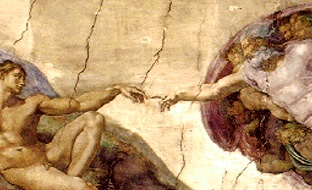 I recently read Andy Crouch’s new book, Culture-Making, a winding book on culture and how Christians can be cultivators of culture.
I recently read Andy Crouch’s new book, Culture-Making, a winding book on culture and how Christians can be cultivators of culture.
Andy’s favorite letter is “C” — and he’s got more C’s in this book
than any book I’ve seen. But, he’s not being cute. The C’s are genuine
and they make the book more useful. But I have to put my big impression
of this book up front: this book has too many ideas and not enough of
them settled. The best book I have read on this topic, surely for a
slightly different audience, is John Stackhouse, Making the Best of It.
There are three parts to the book: culture, gospel, and calling. This
book attempts to take complex issues and simplify them for a more
general Christian audience. Hence, the absence of footnotes. My own
view here is that those who read books on culture
making can handle, and want, footnotes — and more direct,
sustained, philosophical interaction with prominent thinkers. But Crouch’s approach makes the book accessible.
The whole book is summed up in the introduction: “What is most needed
in our time are Christians who are deeply serious about cultivating and
creating but who wear that seriousness lightly — who are not
desperately trying to change the world but who also wake up every
morning eager to create” (12).
Culture, Andy tells us well, is what we as individuals make of the world. We are
called to be creative cultivators of the creation where God has put us.
Part of making something of the world is interpretation, and here Andy
tips his hat to the linguistic turn but this is a theme
that simply isn’t developed to my satisfaction. Yet, I think he sets
himself up for it. Culture is more than what we make and more than the
sense we make of it; culture is already part of the world that we have
to make sense of. Here he is using the profound study of Berger and
Luckmann, and I think this theme is done reasonably well in this book
even if he could engage the entire complex of how primary and secondary
socialization mix into our culture making. Anyway, he’s into our making
of cultural artifacts — and he expounds his ideas by examining how omelets and highways work in our culture.
He comes up with five questions involved in our culture making:
1. What does this cultural artifact assume about the way the world is?
2. What does this cultural artifact assume about the way the world should be?
3. What does this cultural artifact make possible?
4. What does this cultural artifact make impossible or difficult?
5. What new forms of culture are created in response to this artifact?
Crouch’s focus is not on worldview, but on culture and he gets local:
“the culture of a particular sphere, at a particular scale, for a
particular people or public (ethnicity), at a particular time” (60).
This is good; postmoderns, too, embrace this idea. But this view of Crouch’s means more
deconstruction than he attends to. If worldview is too much about
analysis — and he has some good things to say about this — culture making knows that
“culture helps us behave ourselves into new ways of thinking” (64). And that in itself needs to be examined carefully because everything becomes local.
“The only way to change culture is to create more of it” (67) — this
is very important idea and it deals with the “othercott” approach
instead of the boycott approach. Which leads him to his major C’s, or
our basic postures with respect to culture:
Condemning culture
Critiquing culture
Copying culture
Consuming culture
And Crouch advocates cultivating culture by co-creation. He sketches
how evangelicals have interacted with culture; he brings in Francis
Schaeffer, who played more of a role than many realize, but Crouch owes
it to his readers to point out that Schaeffer swiped his stuff on
cultural analysis from Van Til and Hans Rookmaker.
One of the highlights of this book is the section called “gospel” — it
is a sketch of the Bible through the lens of Story but his story is
shaped by “culture making” as inherent to what that Story is all about.
Crouch operates, as many of us today are doing, with a robust sense of
gospel, that God’s redemptive designs include the individual but are
much, much bigger. Overall, I liked this section but for some odd
reason Crouch simply doesn’t bring in “Israel” as a body politic or
social body or kingdom as a “society” Jesus forms or “church” as an
alternative society enough to let them take on separable chapters of
how culture comes into play at the level of
society. Systemics, in other words. Yes, he brings up these
themes often enough but he doesn’t turn his lens toward analyzing them
as cultural products and how systemically they impact the culture
consumer and the culture maker. Or how they shape how we become culture-makers.
The book leans heavily toward
individualism. This all becomes clear when Crouch speaks of Niebuhr’s Christ and Culture and observes that Niebuhr did
not say “Christians” and Culture. Well, yes, I suppose … but … but
… but… what does it mean for us to say we are the Body of Christ
when it comes to Culture. He seems to favor a much more micro-level of
culture making — the individual working with a few others. Andy’s
sense of culture making shares too much with Thoreau for me.
One of his beefs is with the “change the world” industry, and he thinks
we ought to have our goals a little lower in that changing the world is
both too big and out of our control — we can’t predict what will fly
and what won’t. Instead, one of his major proposals is the 3:12:120
factors: create or cultivate culture in a small group of 3 and then
with a slightly larger group and then within a bigger group. This is
the heart of his chp called “community.” I doubt this can be found in
his Story of the gospel in the middle chps of this book but this section does offer
(for me) a kind of ecclesiology. I wanted this point to settle down into a pervasive point of view in the entire book.
We are called to be culture makers and that includes the intersection
of Christ and kingdom and Cross — and it means lifting the lowly and
lowering the exalted.
I seem to be out of step with some early reviews of this book; perhaps I’m wrong.

